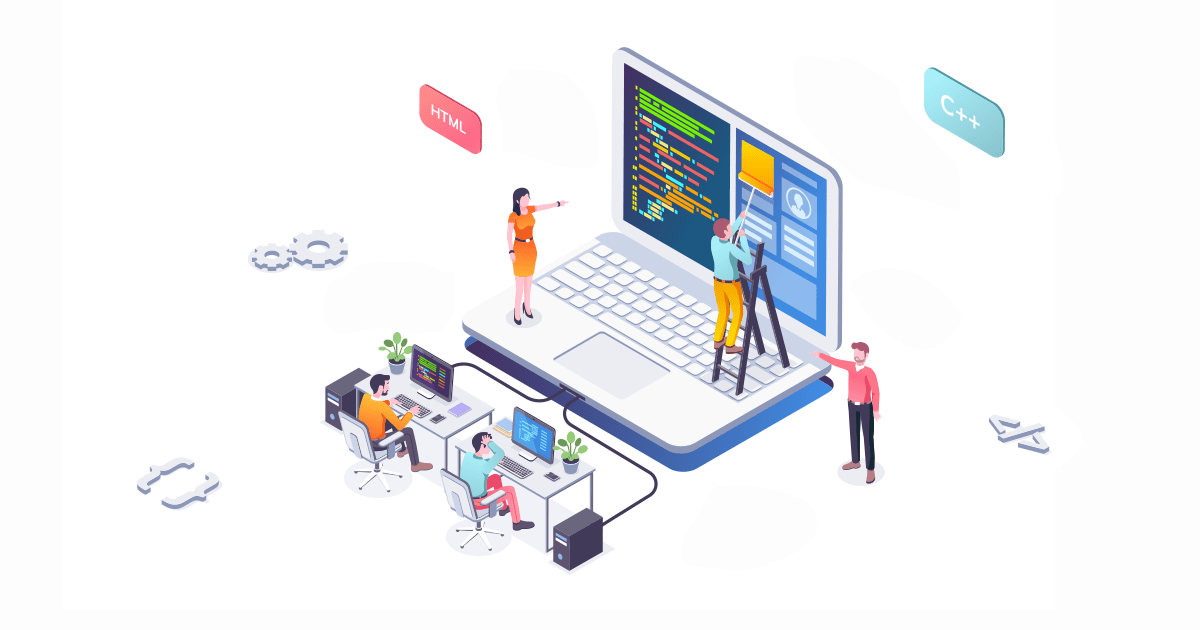The world is changing with unprecedented speed. Whether it’s cloud, the Internet of Things (IoT) or Big Data, there’s no shortage of new dynamics impacting the technology (and thus, business) landscape. And as these functions become more tightly integrated, companies must start rethinking how they approach IT and start thinking about a mainframe migration strategy.
Infrastructure modernization is at the top of most organizations’ “to-do” lists. That’s because legacy technology isn’t designed to handle the dynamic, real-time nature of today’s business infrastructure and the need for continuous transformation. Look no further than the explosion of data and the need to exploit its value to understand – it’s time for a change.
The Data Explosion
You may already be familiar with “Big Data” - referring to the massive amount of both structured and unstructured data created each and every day. These huge sets are leveraged to analyze patterns and trends that could provide a strategic advantage. And they come from everywhere – social media, machine data and transaction results (financial and otherwise). Anytime anyone opens an application, searches the Internet or uses a mobile device – a data point is created.
According to IDC, the “Digital Universe” is doubling in size every two years. By 2020, the number is expected to hit 44 trillion zettabytes. Even more recent calculations peg the number at 775 zettabytes, a 61 percent CAGR since 2018. For those unfamiliar with this numeric expression, 2 million zettabytes is equivalent to every person on Earth receiving 174 newspapers per day!
This deluge has far-reaching impact on the technology powering the business ecosystem. After all, data is used to analyze customer trends and preferences, market shifts, and financial performance. Every piece of information can prove critical to build both short- and long-term competitive strategies. For example, digital information can be used to better understand customer behaviors for effective execution of marketing and sales. Economic shifts are explored to effectively align long-term sales strategies. In fact, both Google and Amazon are widely praised for use of analytics. Each has invested heavily into deep learning and data-based decision modeling to stay ahead of the curve. According to a recent article in Inc. Magazine:
“These companies have managed to leverage the vast amounts of information they get from their multitude of users – whether it be their search habits, the posts they share, the products they buy, or the music they listen to – into major revenue streams. It’s not just the fact that these companies have been able to gather data on millions (or billions, in case of some of these companies); it’s that those companies have managed to effectively utilize that data to better understand and market to their users.”
This mega trend has shaken legacy IT infrastructures and the companies counting on them to the core. What was once “good enough” to store, manage and analyze cannot match today’s requirements. That’s why many companies are taking a closer look at IT modernization, including efficient evolution from mainframe environments.
From the Mainframe to the Mainstream
Given these new dynamics, IT modernization – especially of the mainframe – is becoming a top priority for most companies. As we’ve explored, legacy infrastructures simply weren’t built to handle the parameters of this new environment.
The mainframe environment is designed for such critical applications as bulk data processing, enterprise resource planning and transaction processing. These large-scale systems handle big sets of information for rapid processing. Originally, the term stems from large cabinets acting as the housing for central processing and memory. Mainframes are typically characterized by large availability, reliability and serviceability – with the power to manage high-volume input and output (I/O), with an emphasis on throughput.
Unfortunately, mainframes are proven to significantly block business growth. Known for limited agility, these infrastructures make it difficult to identify and respond to market changes and customer priorities. The environment is simply too rigid to support any meaningful, real-time decisions.
From a cost perspective, monthly license fees continue to rise nearly seven percent annually – and the increase in mobile, batch and Web transaction loads are pushing these expenses even further. Mainframe skills are also few and far between – and it’s becoming increasingly costly for businesses to find the staff to support it.
Mainframe environments were never designed to be agile in the first place. As an article recently pointed out:
“Mainframes could keep operating for years, with companies bringing the occasional outsourcing partner in for maintenance. But finding people to work with the mainframe is increasingly problematic and the technology is so interwoven into underlying systems, modernization appears as an almost insurmountable hurdle.”
For this reason, mainframe migration plans have moved quickly to the top of most companies’ business agendas. Facing demand for a newly agile environment, companies are investing heavily to migrate across more dynamic infrastructures.
Recent surveys of leading business decision-makers prove that investment in mainframe migration projects are on the rise. The survey reports more than 90 percent are actively planning migrations, while nearly 80 percent believe they’re behind in updates. We’ve already shown how these projects can increase efficiency, ease access to resources, simplify administration and management, and streamline expenses. The next question is: How do you get there?
Shaking Up the Legacy Mainframe System
No one said mainframe migration is easy – as it involves moving hundreds of thousands of critical MIPS from legacy infrastructures to Windows, UNIX, and LINUX. This can take place both on-premises or in the cloud. Two of the most impactful areas of mainframe migration are modernization of interfaces and code. Demand is extremely high for mobile access to mainframe applications. Many solutions today can actually leverage legacy code to drive new mobile interfaces for mainframe “green-screen” applications.
Code modernization is the process of taking all the code work on COBOL, Assembler, etc. to next-generation environments. Some scenarios involve a ‘lift and shape” of code to a modern platform and modern Integrated Development Environment (IDE), while more complex projects mandate conversion of the code to a modern language like Java or C#. But whether a company is conducting relatively simple or complex transformations, there are common pitfalls that hinder most projects.
- Lack of Visibility: Before embarking on mainframe upgrades, it’s absolutely critical to understand not only the application universe, but interdependencies between them. You cannot migrate what is not seen, so projects that don’t begin with clear roadmaps of the infrastructure are destined to fail.
- Poor Application Scaling: Some of the biggest mistakes happen when scaling migrated applications. While some applications may be simple, others require complete re-factoring or re-architecting on a code level. This requires a tremendous amount of expertise that many businesses just don’t have. It’s here that aligning with a partner can help.
- Inadequate Planning and Reversal Techniques: Failure sometimes comes down to plans that aren’t well thought-out, or the inability to reverse migrations that aren’t working. The process involves a series of rapid decisions based on deep awareness and research of the specific technology infrastructure. Sometimes, parts of the process don’t go as planned, thus mandating a “fallback” option to undo problematic phases.
- Insufficient Testing: Companies often lack test plans and cases to ensure applications run and perform as expected once transitioned. This can be achieved through a series of manual and automated activities. Testing should be a significant component of any modernization effort, yet it’s often under-scoped or overlooked entirely. A benefit of developing a proper and comprehensive testing program is the value that carries forward beyond the initial modernization project as an organizational asset.
- Lack of “C-Level” Buy In: As discussed in previous posts, business and IT no longer operate in silos. Decisions on technology cannot be made in isolation – and the corporate impact of any change must be made with the organization in mind. Proper mainframe migration must always be supported by business leaders willing to dedicate resources and strategic insight.
Fortunately, there are partners dedicated to helping with the legacy challenges and mainframe migration. It’s here where Astadia helps companies achieve success once thought unachievable.
Taking the Leap
While the benefits of mainframe transformation are many, some risks are far too great to tackle without the right partner. Astadia has decades of experience in next-generation migration strategies, helping modernize the mainframe in the most effective way possible.
Transformations with the greatest success are supported by extensive planning and research. Astadia has built a proven approach to mainframe migration based on three pillars: Mainframe Assessment, Mainframe Modernization, and Application Modernization.
Under the Assessment phase, the legacy environment is explored – creating a detailed picture of all infrastructure pieces, processes and resources. Key data sets and metrics are identified, and the modernization journey is clearly mapped so there are no surprises or confusion. It’s here potential pitfalls are understood, so leaders can make educated decisions.
In the Mainframe Modernization segment, the Astadia team migrates all infrastructure and application elements to a premier cloud platform. This replatforming is a detailed and methodical process, including code and data migration as well as ongoing environment optimization. Astadia staff has led more than 100 mainframe modernization projects and converted millions of lines of COBOL.
Finally, is Application Modernization. As all applications are now independent from the legacy mainframe, they can now be refactored or rewritten – backed by Continuous Integration/Continuous Delivery (CI/CD), Automated Testing and use of Mainframe Managed Services. During this process, there is no “off-the-shelf” application transition, as each is specific and unique to an organization’s needs.
As always, the most successful plans are fully supported by real-time discussions on business challenges and opportunities across the entire environment. This is the only effective approach to designing a custom migration path.
Mainframe Migration Strategy and Beyond
Given the explosion of data, the requirement for business agility, and dynamic nature of today’s markets – infrastructure modernization is more important than ever. Now is the time to find the right partner that can empower the next stage of your modernization journey and implement a rock solid mainframe migration strategy. The team at Astadia is here to help click here to get started.
Now’s the right time to go “out with the old”.
Subscribe to our newsletter
Related news
Related white papers:
Mainframe Modernization: The Balanced Path to Success
In this White Paper you will learn the critical steps needed to complete your Mainframe Modernization successfully.
View more
Let's Talk
Get in touch with our experts and find out how Astadia's range of tools and experience can support your team.
contact us now




